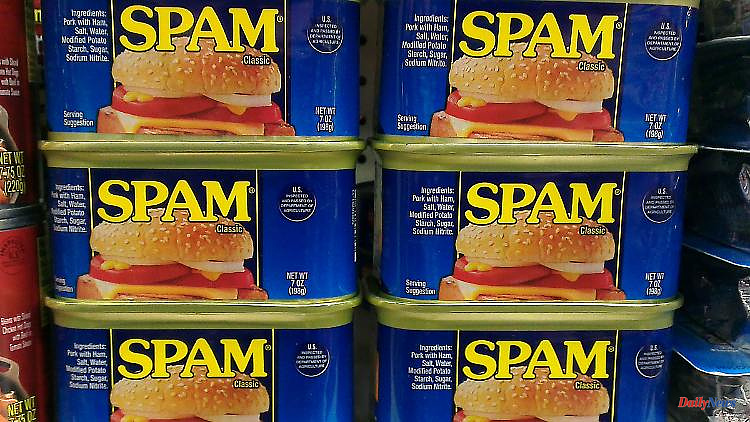Spam mails not only clog up the mailbox, they can also be very dangerous. ntv.de explains how to deal with them and how to protect yourself from them as best as possible.
According to Statista, the number of spam e-mails sent worldwide is increasing year after year. In 2021, almost 320 billion unwanted messages ended up in mailboxes. The Federal Office for Information Security (BSI) found that 56 percent of the e-mails received in the German economy last year were spam. This is a big problem because it's not just annoying ads, but often phishing attempts or other attacks as well. E-mail garbage cannot be completely avoided. But if you follow a few rules, you can contain the flood of unwanted and dangerous mail and protect yourself.
Some spam e-mails are very easy to spot, for example the notorious advertisement for sexual enhancers in broken German. Others look real at first glance, but give themselves away with an arbitrary subject, a neutral salutation or inappropriate sender addresses.
But the masterminds are becoming more and more sophisticated in order to dupe users or electronic guards. Spammers are now also working with artificial intelligence (AI) to make emails look deceptively real. With e-mail addresses traded on hacker exchanges and other information captured by Trojan attacks, they can generate spam that can hardly be distinguished from legitimate messages.
The supposed sender can also be familiar, even if the spam was sent from a different address. To check this, move the mouse pointer over the sender, whereupon the actual address is displayed.
In order to reduce the flood of spam e-mail, it would be best if unauthorized persons did not have an e-mail address in the first place. But even if you're careful, it's very likely that sooner or later it will be tapped. This can happen in the event of a hacker attack on an online service or shop that you are using, or if acquaintances whose address book you are in catch a Trojan.
But it is possible to reduce the risk by saving an e-mail address for important things and setting up others for purchases, etc., which you can then easily do without in an emergency. It is also a good idea not to use your real name so that scammers cannot determine the correct salutation from the address.
If e-mail spam ends up in the mailbox, it is best not to open it in the first place. Under no circumstances should you click on a link or attachment, as they can lead to manipulated websites or contain malware. Inserted images can also be dangerous if the program displays e-mail in HTML format. If you open it, the masterminds receive the information that their message has arrived. In the worst case, the image contains malicious code. The BSI therefore advises deactivating the display in HTML format and using the plain text display if this is permitted by the program.
In Mozilla Thunderbird, for example, you go to View in the menu bar at the top and then click on Plain text behind Message content. In Microsoft Outlook, click the File tab and then click Trust Center under Options. In the settings for the Trust Center, under E-mail security under Read as plain text, activate the Read standard messages in plain text check box.
You should not immediately delete an unwanted message, but first use it to create or improve a filter that can recognize and sort out spam based on various characteristics. This very effective tool can significantly reduce the number of unwanted messages in the mailbox. However, the quality of the watchdogs differs and companies sometimes deliberately set the filters a little looser so that not too much legitimate mail is sorted out.
However, users also have the option of customizing spam filters. The easiest method is to mark a message as spam, it will then end up in the folder of the same name. If an e-mail was incorrectly marked as spam, you can undo this - the filter also learns from this.
In addition, you can create your own rules, such as entering the sender or terms in the subject line or in the text, which means that an e-mail does not end up in the inbox. You can also specify whether they should be deleted, land in the trash or spam folder.
It is also possible to create a suitable filter directly when receiving a spam mail. This means that the sender, subject or other details are automatically taken over and you only have to change few or no settings.
Although e-mail programs such as Mozilla Thunderbird also offer the option of creating filters, these only work on the device on which they were set up. It is better to configure spam filters in the provider's web service, since they then work across devices. This means that you log on to the respective service in your browser.
GMX explains here how the spam filter is trained, it looks very similar at Web.de. Here offers 1
Google actually only advises free users to mark emails marked in Gmail as spam using the exclamation mark icon. But there is a little more: To do this, click on the gear icon and then on Call up all settings. There you will find the Filters and blocked addresses tab, where you can see all the rules that are already in effect and set up new ones via Create new filter.
To generate a filter from within an email, mark a message in the box in front of it and then click the three-dot icon at the top. In the window that opens, select Filter similar messages.
6












